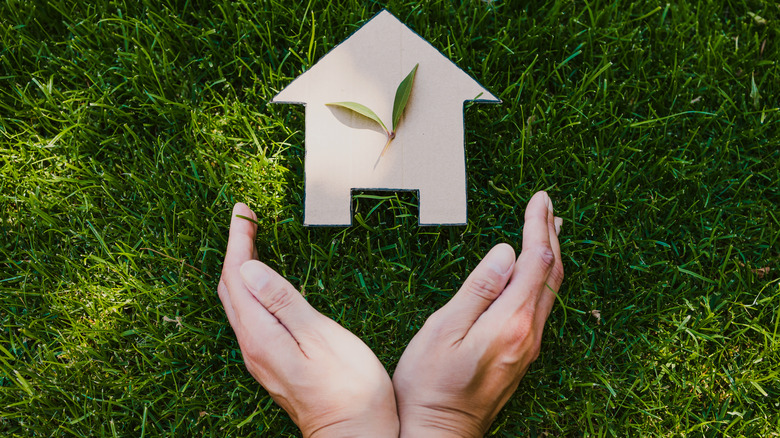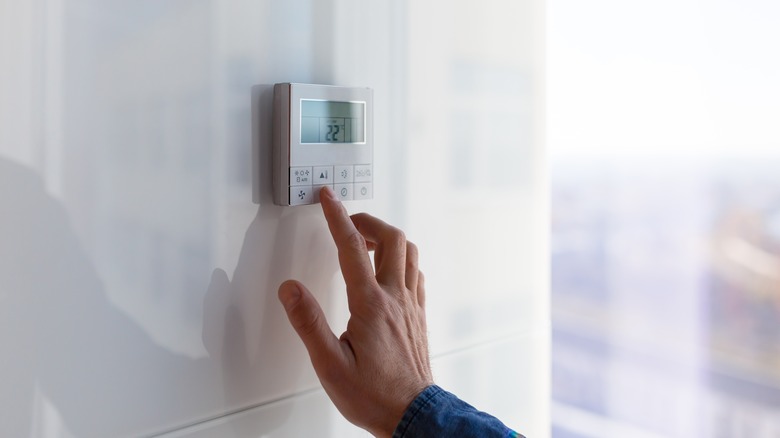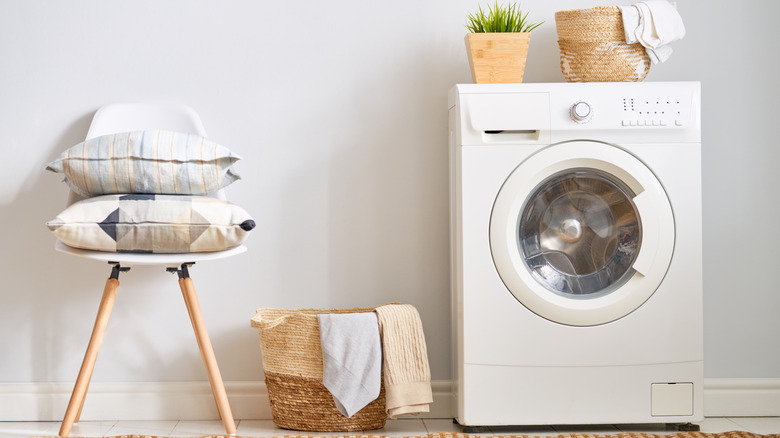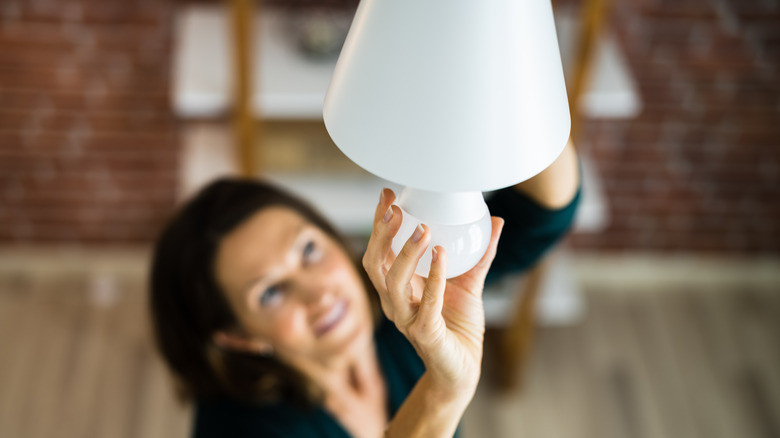3 Top Home Hacks To Improve Your Climate-Friendliness
The climate crisis is something that should call everyone to action, especially in regard to your own day-to-day life. According to Earth.Org, signs of the growing environmental emergency include record-breaking high CO2 emissions, the average temperature being the hottest it's been in 125,000 years, and ice melting at a rate of 1.2 trillion tons per year.
Not only does combating climate change help secure a better future, but it can also be a sound financial investment, too. Evergreen Action warns that leaving the climate crisis to worsen will result in the global economic output reducing by 11 to 14%. With all of this in mind, there are steps you can take in your own life to help reduce your carbon footprint and environmental impact. In fact, there are a variety of changes and, in many cases, upgrades you can make to your home that will make it more environmentally friendly.
1. Update your HVAC system
One of the more damaging daily appliances in your home is your HVAC system — specifically, your air conditioner. According to Conditioned Air Solutions, your AC can impact the climate in a couple of ways, both of which can be solved by updating your system. Those two factors are the refrigerant used to cool your home, which is harmful to the ozone, and how much electricity it uses, which often requires the burning of fossil fuels.
That doesn't mean you need to say goodbye to your air conditioner, though. Instead, simply updating your HVAC system can help reduce your environmental impact, especially if you do so with eco-friendly intent. HVAC.com says that new HVAC units are more energy-efficient, which means they use less gas and electricity. As a bonus, that also results in a lower electricity bill. There is also a movement towards more environmentally conscious refrigerants, which will help even further reduce your impact on the climate.
2. New washer and dryer
Another home appliance duo that is harmful to the environment is your washer and dryer. According to the National Park Service, commercial washing machines use around 35,000 gallons of water per year and up to 910 kilowatt-hours of electricity, while domestic washing machines use roughly 41 gallons of water per load. Dryers aren't free from climate scrutiny either, being responsible for 6% of an average household's total energy use.
As with air conditioners, this doesn't mean you have to forgo the machinery entirely or resort to hand washing and air drying your laundry — although those are viable and impactful options. Instead, you can update your laundry machines to more environmentally friendly and conscious models. Look for an Energy-Star-certified machine, which can reduce water usage by 33% and energy usage by 25%. You can further reduce your carbon footprint by using eco-friendly laundry products. For example, you can swap out your dryer sheets for dryer balls, or opt for scentless laundry detergent.
3. Upgrade to LED lights
A 2015 study showed that the average U.S. residence used a total of 1,105 kilowatt-hours per year on lighting, according to the U.S. Energy Information Administration. While they are quite mainstream, you can help ensure your home light usage is as eco-friendly as possible by switching to LED light bulbs.
LED light bulbs are environmentally conscious for a variety of reasons, including how energy efficient they are — LED bulbs turn 95% of their consumed energy into light, with only 5% generated into heat, making them 80% more efficient than traditional light bulbs (per Solar Electric Power Company). They also don't have as many toxic components, when compared to fluorescent lights, which often contain mercury. They also tend to produce more light than traditional bulbs, making them more effective. Finally, they have a much longer lifespan — up to six times longer than regular bulbs — which makes them much more sustainable.



